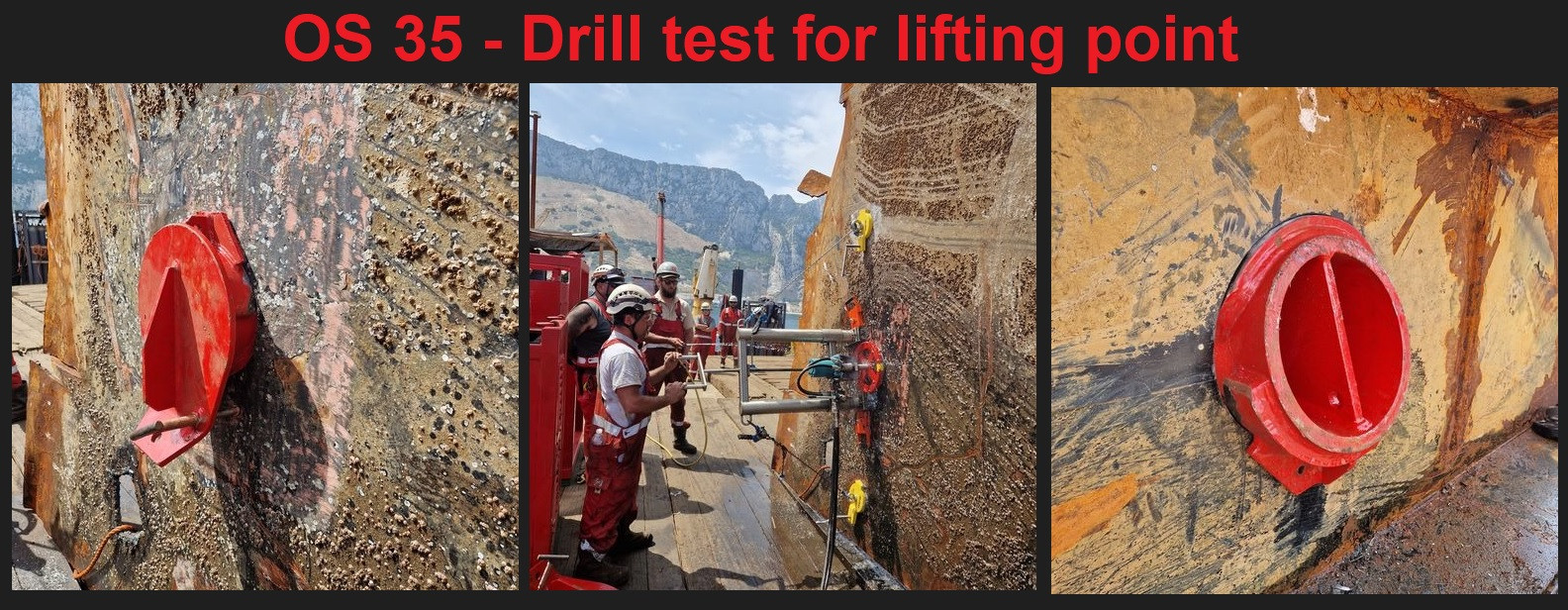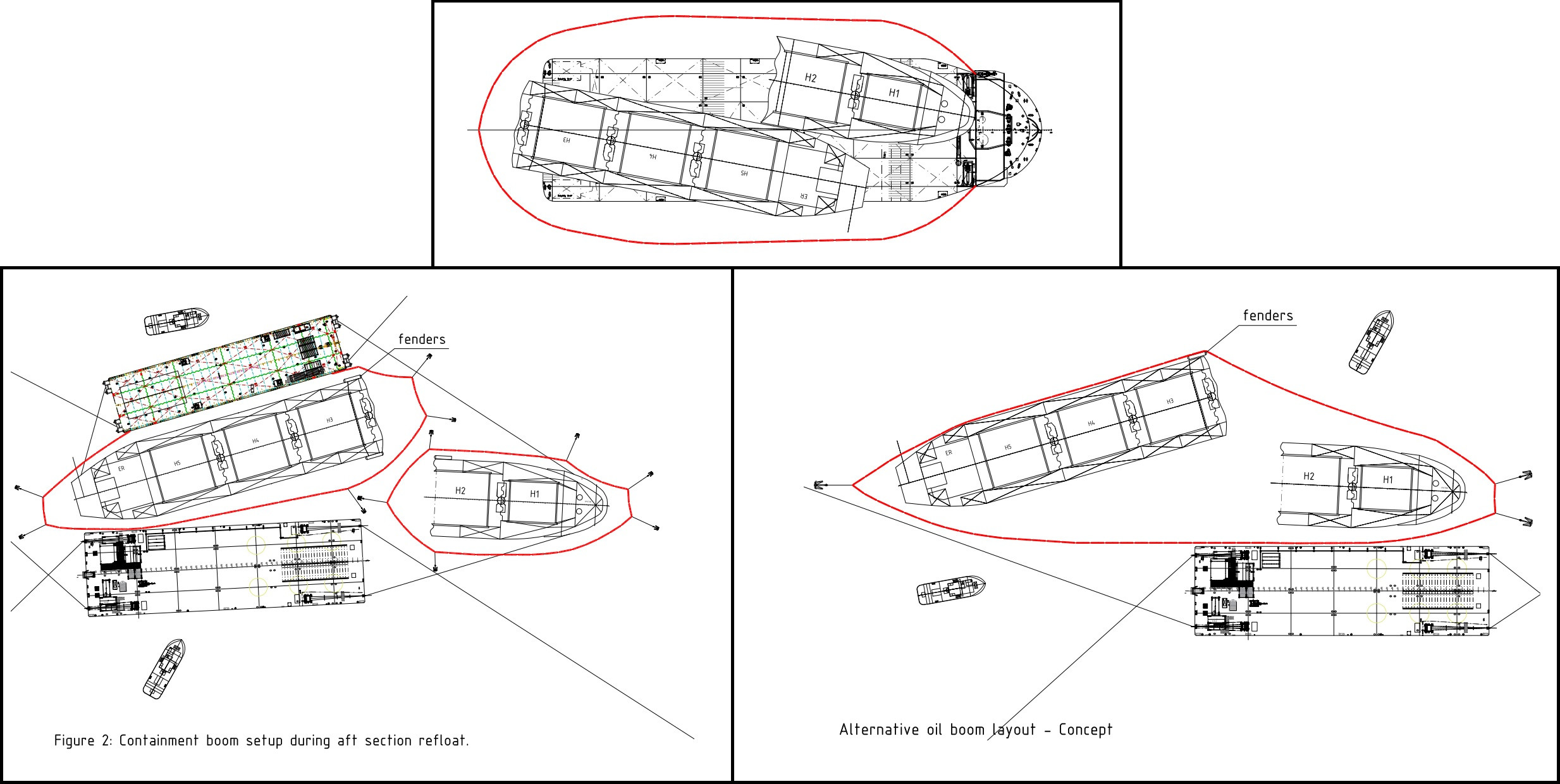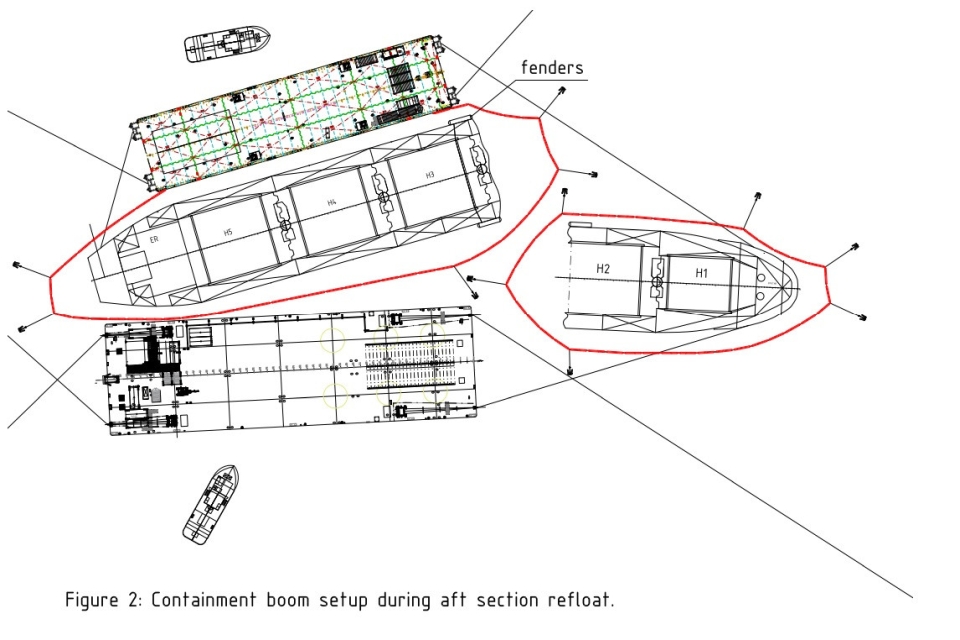The Gibraltar Port Authority has revealed just how Dutch contractor Koole is planning to remove the OS 35 wreck. The plan involves making the forward and aft section airtight and lifting them onto semi-submersible barges. The complete removal will take longer than originally planned.
The wreck removal process will be methodical and deliberate, and will involve a variety of intricate operations, according to the Gibraltar Port Authority. Both the forward and aft section will first be made airtight. The contractors have advised that these preparatory works are taking longer than anticipated and that the wreck is unlikely to be totally removed by the 30th May deadline, which was communicated by the port earlier.
The aft section will then be floated out by re-establishing buoyancy, with a provisional date for this operation set for the 29th May. Contractors expect to be in a position to begin the operation to lift the forward section using barges on 2nd June.
The total removal of the wreck is now projected for the 16th of June. Whilst this short extension to the timeline is unfortunate, it is vital that these processes are completed properly in order to ensure that the wreck is lifted safely and with minimal environmental impact.
The Captain of the Port, John Ghio, says: ‘The works to remove the OS 35 are progressing well, but the reality of the state of the wreck is dictating the pace of operations. It is vital that every stage is completed in a way that is careful, deliberate and safe. Whilst the short delay for its final removal is unfortunate, this is the only safe way to do so that mitigates the potential future source of pollution and minimises the impact on the environment and Gibraltar’s coastline.’
Also read: All cargo removed from OS 35 shipwreck
Airtight seals
Lifting points have already been fitted to the hull of the forward section, and the lifting tools on board the barges are ready for use. Extensive preparatory works are currently underway to make all compartments on the forward section airtight.
This requires a team of divers, who are working to maximum capacity to seal and test the compartments. Airtight compartments will help to lighten the load that needs to be lifted. As soon as it is confirmed that the forward section is airtight, divers will begin to seal all compartments on the aft section.

Lifting operations
The aft section will be refloated first by re-establishing buoyancy, in a reverse of the process used to lower it to the sea bed. This will be followed by the forward section, which will be physically lighted from the seabed using the lifting points.
Once it is clear from the sea bed, additional chains will be passed under the hull to reinforce stability and provide further control to the lifting process. Each section will be brought alongside the semi-submersible barge before being lifted out of the water.
These stages of the operation carry the greatest risk of the release of oil residues, an unknown quantity of which remains trapped within the hull and may escape during the refloating and lifting processes.
Also read: OS 35 wreck splits in two after bad weather
Oil spill response plans
The Gibraltar Port Authority is working closely with Koole and the Department of Environment to finalise detailed tactical oil spill response plans for the refloating and lifting operations to minimise the impact on the start of the bathing season as far as possible.
Containment booms will be placed around each section of the wreck individually so that any escape of residues can be dealt with as soon as possible. Whilst this can’t guarantee absolute containment, detailed contingency plans are also in place to mitigate the impact on the environment, including the potential deployment of preventive booms at Catalan Bay and Sandy Bay, and of a deflection boom at the East Side Reclamation.

The Gibraltar Port Authority has ensured that the contractors will have enough oil spill response assets on site to deal with any potential release of oil, with the port authority providing backup resilience only. In this way, a closure of the Gibraltar Port in the event of an oil release is not anticipated. However, contingency plans are in place to scale down port operations if necessary.
The Department of Environment will increase their patrols both on land and at sea during the refloating and lifting operations, with a rapid response plan for any potential release of oil.
Also read: 310,000 litres of oil removed from partially sunk bulk carrier OS 35
OS 35 sinking
On 29 August, 2022, the OS 35 collided with LNG tanker Adam LNG in the Port of Gibraltar. Although the tanker only suffered minor damage, the bulk carrier suffered a ten by four-metre gash in the starboard side of the hull and was making water. It was directed to a location off Catalan Bay to beach and the bow went underwater.
Two days later, the hull broke, but the two parts did not fully separate yet, this happened later, in April, when the wreck was battered by severe weather.
The vessel is sitting 700 metres off the shoreline of Catalan Bay. Since its grounding, salvors have removed as much fuel oil and diesel oil from the vessel as possible as well as the rest of the inventory and cargo. The accident has resulted in several oil spills, with some oil reaching the shorelines.
Pictures by the Gibraltar Port Authority.








